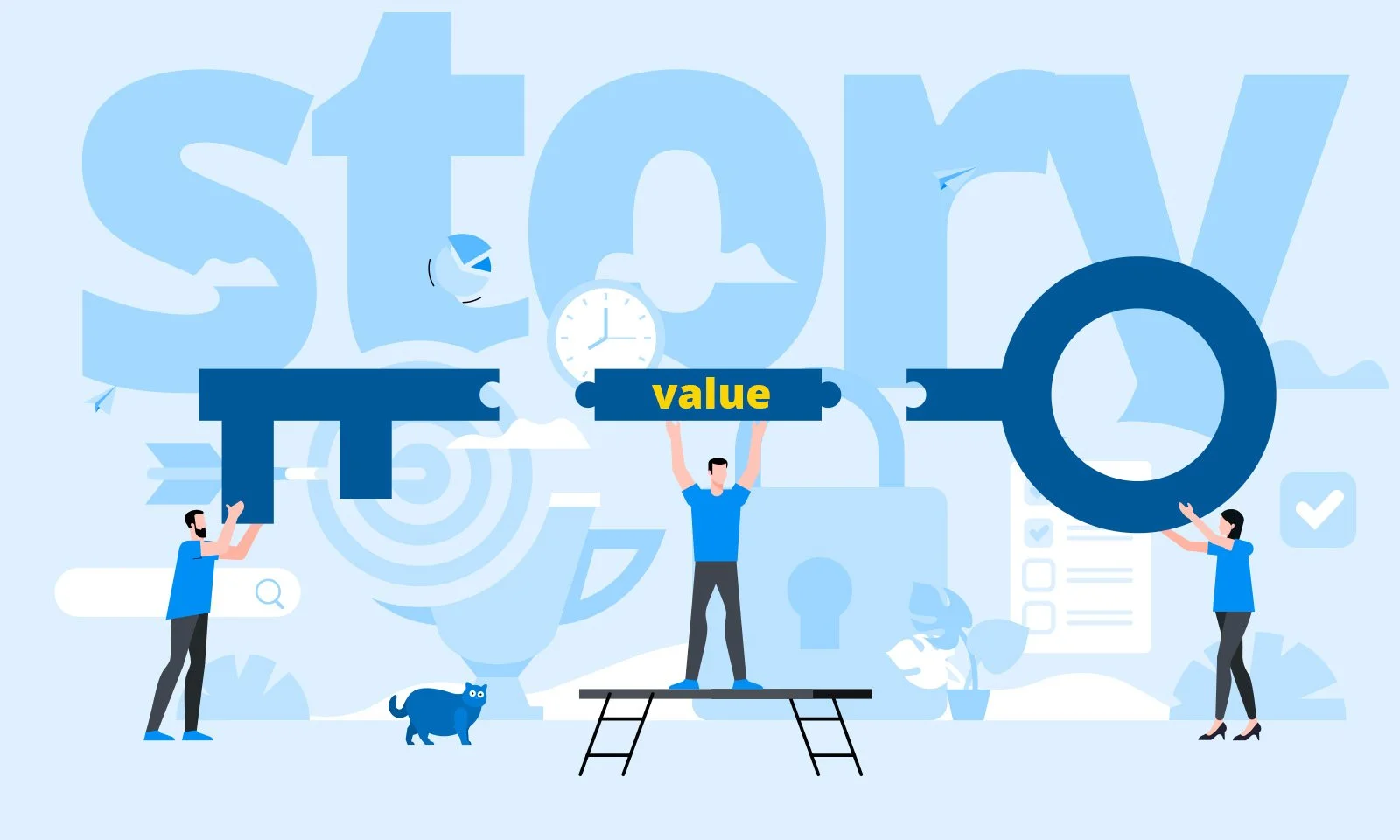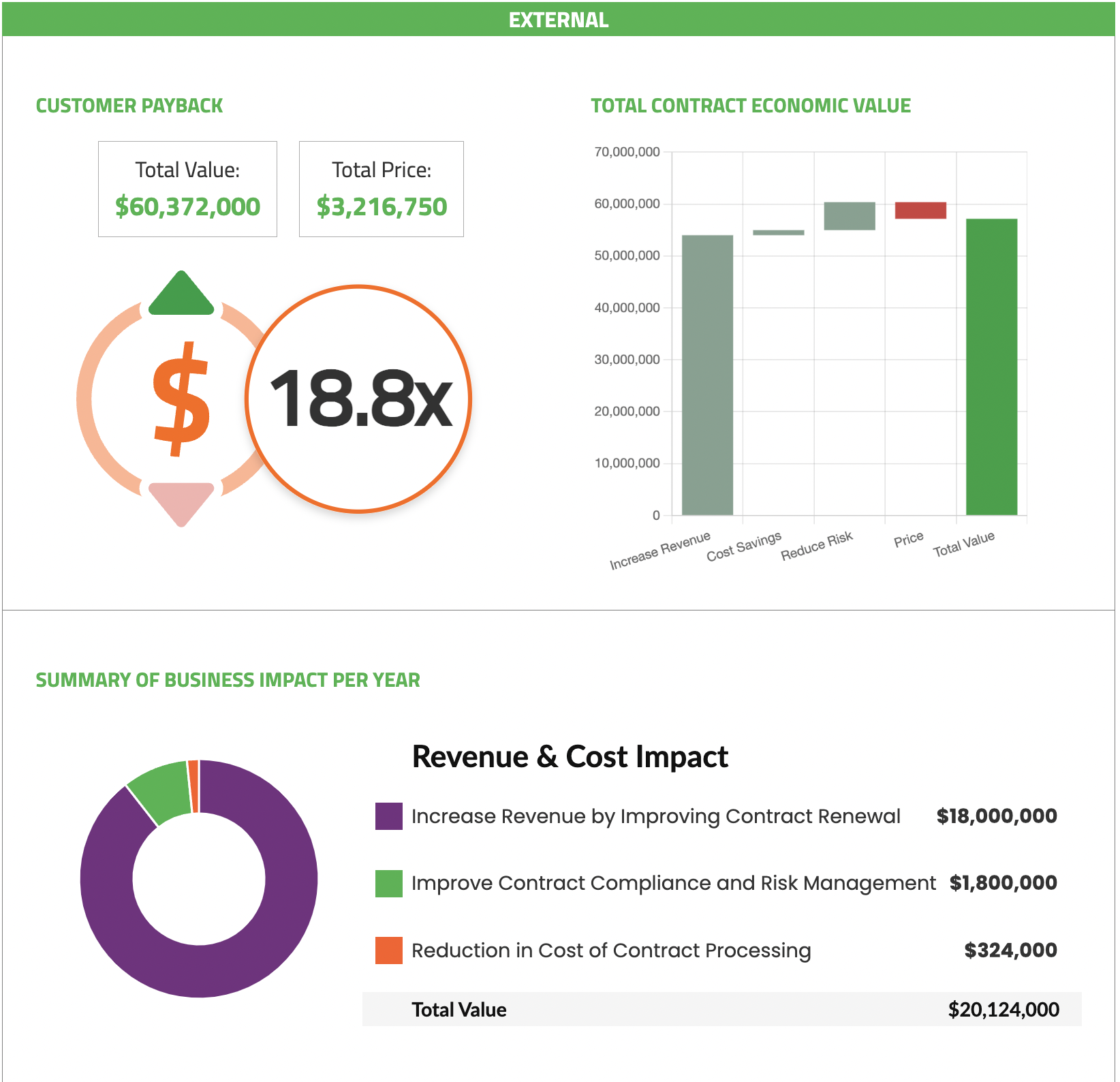Value stories are the key to value based pricing success
Steven Forth is CEO of Ibbaka. See his Skill Profile on Ibbaka Talio.
Value based pricing is based on a value model
Value based pricing requires a formal value model. Without a value model, it is mere hand-waving and subjective guessing. If you claim to be using value based pricing but don’t measure the value you deliver you are fooling yourself. A value model is a system of value drivers, represented as equations.
A value driver is an equation estimating the impact of your solution on your customer's business. Revenue Improvement: Helps your customers increase revenues. Cost Reduction: Helps your customer reduce costs. Operating Capital Reduction: Helps your customer reduce operating capital requirements. Risk Reduction reduces exposure to risk and adverse outcomes.
Value based pricing needs value based sales to succeed
Value based pricing is often associated with value based sales. The two work together well. Value based pricing only has an impact if the value is effectively communicated and connected to price. For most companies, this is the job of sales.
However, value models are not generally something that salespeople want to spend a lot of time explaining to buyers. Buyers buy when you can tell them a compelling story. Value based selling may depend on value models but it uses value stories.
What is a value story?
A value story takes the most important value drivers and uses them to tell the story of how a solution will make life better for the buyer and the buyer’s organization. Like any story, it needs to have a narrative arc, a beginning, a challenge, a climax, and a new normal.
For sales, one begins with the world as it is today, there is a challenge to the organization that is becoming increasingly severe (it could be revenue, costs, risks, or failure to take advantage of new opportunities), and the seller proposes a solution and shows how it will address the challenge.
The value drivers are embedded in the story, they provide the necessary evidence, and move the plot forward.
There is more than one flavor of value story
In the real world, there is more than one flavor of value story. At Ibbaka, we use value stories in four different ways: for Value Validation, for Value Exploration, for Value Presentation, and for Value Documentation.
Value Validation
This is the first use of a value story. It was pioneered by Ed Arnold as a way to get a deeper understanding of a value model while validating it with real customers. See Why You Should Use Value Stories Instead of Conjoint Analysis for B2B Pricing.
In Value Validation, one conducts a series of structured conversations with current, past, and prospective customers to see how they perceive value and to get them to share the data needed by the value model. The data needs to come from the customer. Generally, Value Validation interviews lead to changes in the value model. They are a first-order input that leads to change. The value validation interviews also provide the evidence needed during value exploration and value presentation.
Value Exploration
The Value Exploration value story is used early in the sales process to get the buyer talking about value and providing the information needed to effectively communicate value using the customer’s own data. Price should not be part of the conversation at this point. The focus is the customer. The customer should be the hero of the story. See How to Write a Compelling Value Story
Value Presentation
At the end of the day, the buyer and seller have to agree on a price. No agreement on price, no sale. The Value Presentation builds on the Value Exploration to put price in the context of value. The focus is the value to the customer (V2C) with the price being only a small percentage of the value promised. Below are some screen captures from Ibbaka Valio. The top image is part of the overall value dashboard. The lower images are some of the interactive graphics that can be used in the Value Presentation.
Value Documentation
It is not enough to use value to close the sale. In a subscription business, one needs to deliver the promised value. No value delivery, no renewal. The value story should become something that is maintained and updated. There are many ways to do this. The best practice is to do this by connecting the value model to the application and other applications that track business performance. One can also weave a form of value validation interviews into customer support and business reviews. Once again, the goal here is to hear from and get data from the customer. To listen and not to try to persuade. Value models and value stories are built on trust, and that trust begins with showing that you understand and care about the customer, how they create value for their customers, and how you help them to create that value.














